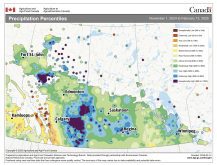Ocean freight rates have been climbing, and the forecast is for further escalation unless a trade war erupts between the United States and China, says a Montreal freight broker.
Freight rates were “fairly healthy” in 2017 compared to 2016, said the broker who requested anonymity.
Average Panamax vessel earnings climbed to about US$14,000 per day by the end of 2017, which is approximately double where they began the year.
The upward trend is continuing in 2018, although freight rates have dipped in recent weeks because of nervousness over a brewing trade war between the U.S. and China.
Read Also

Europe holds promise for Canadian lentils
Pulse Canada is trying to help boost lentil consumption in Europe, which is already the fourth largest market.
Despite that hiccup, the long-term outlook remains bullish. Freight futures are showing a premium to the spot market in the third and fourth quarters of 2018.
“If you go by the futures they’re showing you a strengthening of the market,” said the broker.
Bruce Burnett, director of markets and weather with Glacier MarketsFarm, said rising freight rates are slightly advantageous for Canadian farmers.
It makes their crops more competitive into nearby markets such as Mexico, South America and the eastern side of the Asian basin.
However, it all depends on the crop and the destination. For instance, a lot of Canadian durum has been moving through Vancouver to North Africa and the Mediterranean Basin. If rates continue to climb, it may push the trade flow back through Canada’s eastern ports.
One possible impact of rising freight rates is that it will reduce Russia’s ability to ship its grain as far afield as it has been doing. Russian wheat may not be able to continue displacing Canadian and Australian wheat in places such as Indonesia.
Burnett said the increase has been gradual, and rates are still well below where they were when there was a shortage of ocean vessels.
“Ocean freight rates have gone up, but they haven’t gone crazy high by any means,” he said.
“The market has been so low for so long that everybody has gotten used to it.”
One reason for rising bulk ocean freight rates is improved commodity prices. While grain prices are in the doldrums, grain accounts for only about 10 percent of overall bulk freight volumes.
Iron ore and coal are the two big commodities, and they have been doing well the last few years. Freight rates typically rise when commodity prices are improving.
Another factor is that for a number of years the amount of new vessels coming onto the ocean far outstripped the amount of old ships heading for the scrap yard. That led to a situation where there was more supply than demand.
“Lately that equation has found an equilibrium, I think, in that the number of ships being built compared to the number of ships being scrapped are roughly the same,” the Montreal broker said.
One other major factor behind escalating ocean freight rates is rising oil prices. Brent crude oil futures prices were nearly $73 per barrel as of April 18, the highest level it has been since late 2014.
The broker believes the only thing that will drive ocean freight rates back down is a full-on trade war between the U.S. and China. Right now it is a war of words, but if both countries follow through and implement tariffs on various commodities, that will have a huge impact on trade flows and freight rates.
















